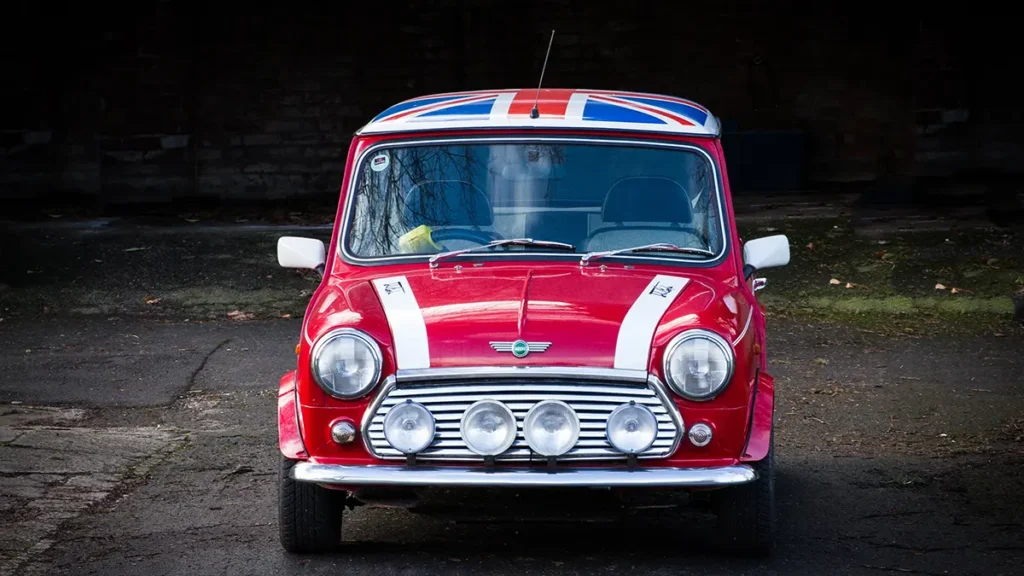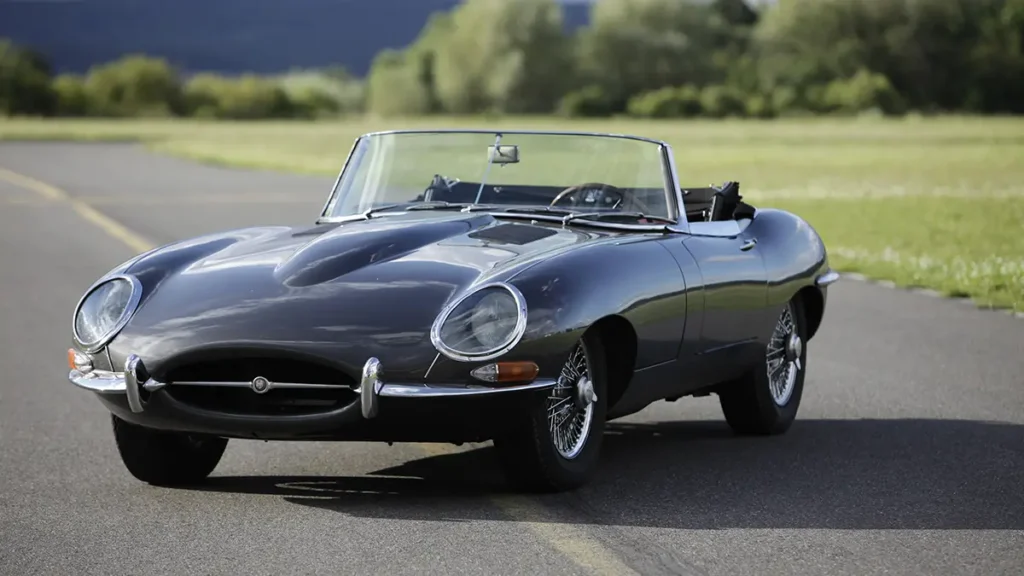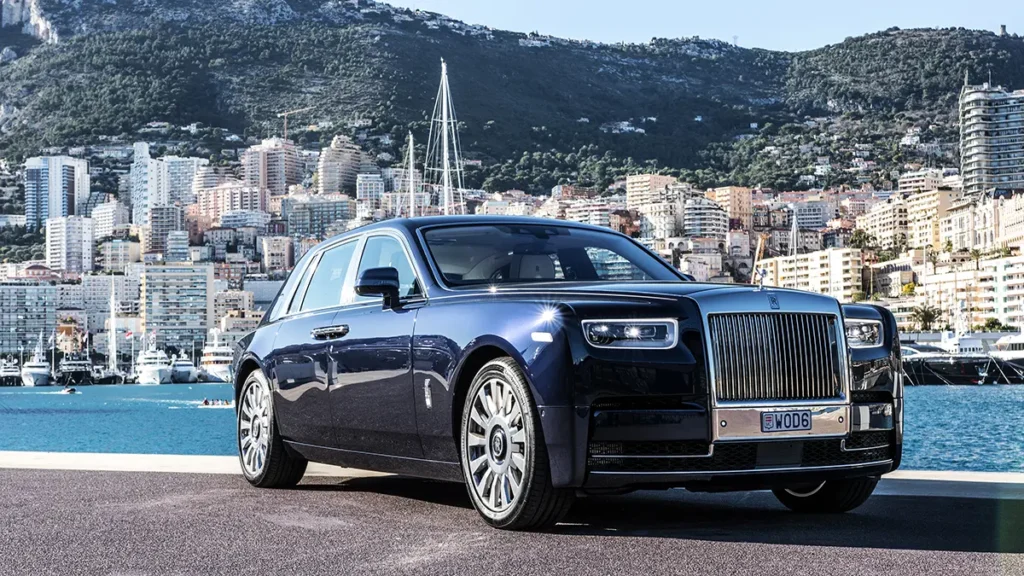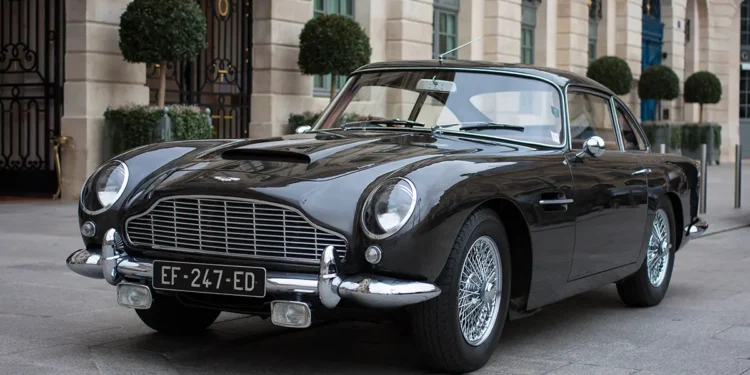Overview of British cars
From their impeccable style to their unmatched craftsmanship, British cars have carved a distinctive place in the annals of automotive history. Their innovation, aesthetic appeal, and performance continue to enthral enthusiasts and critics alike.
Eight pioneering vehicles
Over the years, numerous British vehicles have transformed the automotive industry and become beloved icons. We’ll delve into the histories, characteristics, and unique features of eight such pivotal vehicles in the following sections.
Land Rover Defender

Introduction
Hailing from the United Kingdom, the Land Rover Defender epitomises ruggedness and durability. Its production, which began in 1948, has seen it evolve from a farming utility vehicle to a luxurious off-roader.
History
Originally intended for agricultural use, the Defender quickly outgrew its utilitarian roots to become a beacon of British engineering and adventure. Its durability and off-road prowess made it a favourite among military personnel, explorers, and adventurers worldwide.
Features
The Defender’s ruggedness, reliability, and versatility are its defining features. Despite its evolution over the years, its capacity for handling challenging terrains and demanding conditions remains unparalleled.
Mini

Introduction
The Mini is an emblematic British automobile, born in 1959 out of a need for a small, efficient, and affordable vehicle. The brainchild of Sir Alec Issigonis, it quickly embedded itself into British culture and became an enduring icon.
History
The Mini’s cultural significance is evidenced by its depiction in popular media, most notably the film ‘The Italian Job’. Its compact design, agility, and low running costs made it a symbol of the swinging sixties, and it remains one of the best-selling cars in British history.
Features
Despite its diminutive size, the Mini is praised for its handling and agility. Its revolutionary front-wheel-drive layout, combined with its transversely mounted engine, set new standards for space efficiency in passenger cars.
Lotus Elise
Introduction
Introduced in 1996, the Lotus Elise represents British engineering’s commitment to delivering pure driving pleasure. Its lightweight structure and performance-oriented design make it an outstanding sports car.
History
The Elise was conceived to embody Lotus’s philosophy of performance through light weight. Its design emphasis on handling and agility is a testament to this philosophy.
Features
The Elise is known for its light weight and remarkable handling, owing to its aluminium chassis and fibreglass body. It was initially powered by a 1.8-litre four-cylinder engine, delivering up to 190 horsepower and capable of accelerating from 0-60mph in just 4.9 seconds.
Jaguar E-Type

Introduction
Introduced in 1961, the Jaguar E-Type is a quintessential British sports car, often lauded as one of the most beautiful cars ever made. It combined sleek design with impressive performance, offering a high-speed driving experience at an affordable price.
History
The E-Type emerged from the racing pedigree of its predecessor, the D-Type. Its immediate impact on its debut was a testament to its beauty and performance, earning it a place in automotive history.
Features
The E-Type was powered by a 3.8-litre six-cylinder engine, which allowed it to reach a top speed of 150mph – a remarkable feat at the time. Its stunning design, marked by its long bonnet and distinctive rear, has made it a beloved classic.
Bentley Continental GT

Introduction
As a symbol of luxury and craftsmanship, the Bentley Continental GT redefines grand touring. First introduced in 2003, it perfectly combines power, style, and comfort.
History
The Continental GT marked a significant milestone in Bentley’s history, introducing a new era of craftsmanship and performance under Volkswagen Group’s ownership.
Features
The Continental GT is renowned for its handcrafted luxury interior, refined performance, and commanding road presence. It is powered by a 6.0-litre W12 engine, embodying Bentley’s tradition of grand touring comfort and speed.
MG MGB
Introduction
The MG MGB is a British classic that symbolises affordable sports car ownership. Produced between 1962 and 1980, it became one of the best-selling sports cars of its era.
History
Designed to be both affordable and practical, the MGB became an instant hit. It catered to the desire for a compact, sporty yet comfortable vehicle that offered both fun and affordability.
Features
The MGB was powered by a 1.8-litre four-cylinder engine, offering 95 horsepower. It boasted a 0-60mph acceleration time of 11 seconds, encapsulating the thrill of a sports car in an accessible package.
Rolls-Royce Phantom
Introduction
The Rolls-Royce Phantom, the epitome of luxury and craftsmanship, stands tall as the flagship model of one of the world’s most prestigious car brands, Rolls-Royce. This immaculate vehicle has been the chariot of choice for the elite, the powerful, and the influential since its inception.
History
Introduced in 1925, the Phantom has long served as a testament to Rolls-Royce’s commitment to unparalleled luxury. Over the decades, the Phantom has evolved, adapting to the changing tastes and requirements of its exclusive clientele. From royalty and heads of state to the creme de la creme of society, the Phantom has transported its occupants in unrivalled opulence and style.
Features
The Phantom is celebrated for its luxurious interior, exquisite attention to detail, and impressively smooth ride, earning it a place in the pantheon of the world’s finest automobiles. The latest model, released in 2017, is powered by a 6.75-litre V12 engine, delivering an exhilarating acceleration from 0-60mph in just 5.3 seconds – a testament to its perfect blend of grandeur and performance.
Aston Martin DB5

Introduction
The Aston Martin DB5, one of the most iconic British sports cars, is synonymous with elegance, power, and sophistication. Best known for its association with the world’s favourite spy, James Bond, this automotive masterpiece is etched into popular culture.
History
Produced between 1963 and 1965, the DB5’s unique charm and breathtaking performance quickly solidified its status as a cultural icon. Its prominent feature in the James Bond films further amplified its allure, cementing its place as a symbol of luxury and style.
Features
The DB5 was renowned for its potent 4.0-litre six-cylinder engine, which could propel it to a top speed of 145mph. Beyond its performance, the DB5 also stood out for its stunning design, luxurious interiors, and cutting-edge features for its time. With its price tag matching its exclusivity, the DB5 remains an enduring symbol of British automotive excellence.
Conclusion
Summary of British Cars
In this exploration of British Cars, we’ve traversed the rich history, exceptional craftsmanship, and pioneering innovations that make British cars truly remarkable. These vehicles, from the rugged Land Rover Defender to the luxury epitomised by the Rolls-Royce Phantom, reflect the diversity and creativity of British car manufacturing. The ubiquitous Mini and the stunning Aston Martin DB5 are testaments to the UK’s ability to create cars that not only perform exceptionally but also capture the world’s imagination. The agile Lotus Elise, the beautiful Jaguar E-Type, and the grand Bentley Continental GT further represent the breadth of UK’s automotive offerings. The MG MGB, with its accessible sports car ethos, represents another facet of British motoring – the pursuit of driving pleasure at an affordable price.
Impact of British Cars
British cars have not only defined style, performance, and innovation in motoring, but they’ve also left a profound impact on society and popular culture. The Mini embodies the spirit of the 1960s, the Aston Martin DB5 is forever immortalised in the James Bond films, and the Rolls-Royce Phantom has become a symbol of ultimate luxury and prestige. These cars have shaped and been shaped by the times and societies in which they were created, and their legacies continue to influence automotive design and innovation. British cars, therefore, are not just vehicles; they are cultural icons, symbols of their times, and the embodiment of the indefatigable British spirit.
Frequently Asked Questions:
-
What makes British cars unique in the automotive industry?
British cars are renowned for their impeccable style, unmatched craftsmanship, and pioneering innovation. They have an illustrious history that spans various automobile genres, from the rugged off-roader Land Rover Defender to the luxury icon Rolls-Royce Phantom. Furthermore, British vehicles often embed themselves in popular culture, as exemplified by the Mini and the Aston Martin DB5, further elevating their status in the industry.
-
How has the Land Rover Defender evolved since its inception?
Originally designed for agricultural use in 1948, the Land Rover Defender has grown from its utilitarian roots to become a symbol of British engineering and adventure. Its durability and off-road capability made it popular among military personnel, explorers, and adventurers worldwide. Over the years, the Defender has evolved into a luxurious off-roader, retaining its ruggedness, reliability, and versatility while integrating modern comfort and design elements.
-
What role did the Mini play in British automotive history and culture?
Introduced in 1959 as a small, efficient, and affordable vehicle, the Mini quickly became an integral part of British culture and an enduring icon. It became synonymous with the vibrant spirit of the 1960s and was popularised further by its depiction in media, particularly in the film ‘The Italian Job’. Despite its small size, it set new standards for space efficiency in passenger cars with its front-wheel-drive layout and transversely mounted engine.
-
What are some of the key characteristics of iconic British sports cars like the Lotus Elise and the Jaguar E-Type?
Introduced in 1996, the Lotus Elise embodies the philosophy of performance through light weight, known for its aluminium chassis, fibreglass body, and remarkable handling. The Jaguar E-Type, launched in 1961, is often hailed as one of the most beautiful cars ever made, combining sleek design with impressive performance. It was powered by a 3.8-litre six-cylinder engine, reaching a top speed of 150mph – a remarkable feat for its time.
-
How have British cars influenced society and popular culture?
British cars have had a profound impact on society and popular culture, often becoming cultural icons and symbols of their times. For instance, the Mini encapsulates the spirit of the 1960s, while the Aston Martin DB5, featured in the James Bond films, symbolises luxury and style. The Rolls-Royce Phantom has become the emblem of ultimate luxury and prestige. These vehicles have shaped and been influenced by the eras they were created in, and their legacies continue to inspire future automotive design and innovation.









